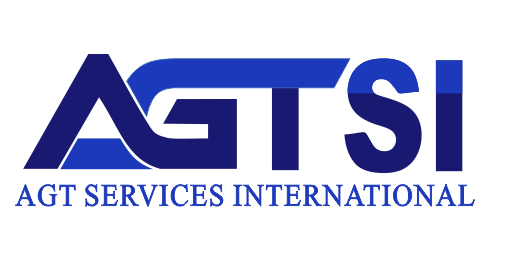Introduction
In today’s competitive job market, attracting and hiring top talent quickly and efficiently is more important than ever. Companies are competing for the best candidates, and the recruitment process can often feel overwhelming. This is wherein an Applicant Tracking System (ATS) comes into play. An ATS can simplify the recruitment process, helping you manage large volumes of applications, screen out incompetent candidates, and enhance communication with potential hires.
However, to truly use the power of an ATS, it’s crucial to use it effectively. Misusing or overlooking your ATS can lead to missed opportunities and a less efficient hiring process. To ensure you maximize the benefits of your ATS and stay ahead of the competition, here are 5 strategies for optimizing ATS in recruitment. Implementing these 5 strategies for optimizing ATS in recruitment will help you attract and hire the best talent efficiently.
1. Optimize Job Descriptions for ATS
Creating job reports that are optimized for your ATS is crucial to attracting the right candidates and ensuring the efficiency of your recruitment process. An ATS scans and ranks resumes based on the relevance of keywords found in job definitions. Therefore, it’s important to include keywords that match the skills and qualifications you seek in a candidate. This practice not only improves the visibility of your job postings but also ensures that ATS can effectively match and rank applicants, bringing the most qualified individuals to the forefront.
How to Optimize:
Use Specific Job Titles and Industry-Related Terms
Skill job titles that accurately reflect the role and are commonly used in your industry. Generic or overly creative titles can be misleading and may not rank well in searches.
Highlight Essential Skills and Qualifications
Identify the core skills and qualifications necessary for the job and include them clearly in your job description. This helps the ATS identify the best candidates and gives applicants a clear understanding of what is required.
Detail Responsibilities and Expectations
Clearly outline the primary responsibilities of the role and what you expect from the candidate. This specificity helps in attracting applicants who are genuinely interested and qualified for the position.
Incorporate Keywords Naturally
Integrate relevant keywords throughout the job description in a natural and readable manner. Overloading your description with keywords (keyword stuffing) can make it difficult to read and fade by the ATS.
Avoid Overly Complex Language or Jargon
While it’s important to be specific, avoid using excessively technical terms or terminology that might confuse the ATS or potential candidates. Keep the language clear and straightforward to ensure better comprehension and ATS compatibility.
Use Bullet Points for Readability
Organize information using bullet points to make it easier for both the ATS and candidates to scan the content quickly. This format highlights key details and improves the overall readability of your job description.
By following these optimization strategies, you can create job descriptions that not only appeal to the right candidates but also work smoothly with your ATS, resulting in a more efficient and effective recruitment process.
2. Automate Resume Screening
One of the most significant advantages of an Applicant Tracking System (ATS) is its capacity to systematize the resume screening process. This feature can save countless hours and simplify your recruitment efforts, ensuring that only the most suitable candidates make it to the next stage of the hiring process. By setting up your ATS to filter resumes based on specific measures such as experience, education, and skills, you can significantly improve the efficiency and effectiveness of your recruitment process. Here’s how to optimize the mechanization of resume screening:
Automation Tips
Define Clear and Precise Screening Criteria
Begin by simply understanding the job requirements and defining the essential capabilities needed for the role. This might include specific degrees, certificates, years of experience, technical skills, and even soft skills. Input these criteria into your ATS to ensure it filters and ranks candidates accurately.
Regularly Update These Criteria
Job roles and requirements can grow over time. Periodically review and update your screening criteria to reflect the current needs of your organization and the job market. This practice ensures your ATS continues to select candidates who meet the latest job specifications.
Use ATS Filters to Narrow Down Candidate Lists Effectively
Utilize the filtering options provided by your ATS to filter through large volumes of applications. You can filter candidates by various parameters such as location, education level, specific skills, years of experience, and more. This helps you create a shortlist of the most relevant candidates quickly and efficiently.
Leverage Boolean Search Capabilities
Many ATS platforms offer Boolean search functionalities, allowing you to combine keywords and words in specific ways to refine your search. Using Boolean operators such as AND, OR, and NOT can help you identify candidates who meet multiple fine criteria, further limiting your search to the best matches.
Set Up Automated Alerts and Notifications
Configure your ATS to send automated alerts when candidates who meet your predefined criteria apply. The bold approach ensures you can engage with top candidates promptly, increasing your chances of securing the best talent before your competitors.
Implement Tiered Screening
Develop a categorized screening system to categorize candidates into different levels based on how closely they match the job requirements. Implementing a tiered screening approach helps prioritize which candidates to review first. It can also identify potential fits for other open positions within your organization.
Analyze and Adjust Screening Effectiveness
Sometimes, consider the outcomes of your automatic screening process. Assess the quality and relevance of candidates being shortlisted by the ATS. Use this data to adjust your screening criteria and filters, continuously improving the effectiveness and accuracy of your automated screening.
Integrate Skill Assessments
Integrate skill assessments within your ATS to automatically evaluate certain competencies of applicants. This can provide an additional layer of screening, ensuring that only candidates who meet both the resume-based criteria and practical skill requirements proceed to the interview stage.
By effectively automating the resume screening process, you can reduce the time and effort required to identify qualified candidates, allowing your recruitment team to focus more on engaging with top prospects and making successful hires. This not only improves the efficiency of your hiring process but also improves the overall quality of your candidate selection.
3. Utilize Data Analytics
Modern Applicant Tracking Systems (ATS) come with powerful analytics tools that provide a practical understanding of every stage of your recruitment process. By using these tools, you can gain a deeper understanding of your hiring activities and make data-driven decisions to improve your overall strategy. Tracking key metrics such as the source of hire, time-to-fill, and candidate drop-off rates can reveal critical patterns and blockages, allowing you to fine-tune your recruitment efforts for optimal efficiency and effectiveness.
Analytics Tips
Regularly Review Your ATS Analytics Reports
Make it a routine to analyze the reports developed by your ATS. These reports can provide complete data on various aspects of your recruitment process, including application sources, candidate demographics, and hiring timelines. Regular reviews ensure you stay updated with the latest trends and performance metrics.
Track Source of Hire
Identify which sources (job boards, social media, referrals, etc.) are bringing in the highest quality candidates. Understanding where your top talent is coming from allows you to allocate resources more effectively and invest in the most productive channels.
Monitor Time-to-Fill
Measure the average time it takes to fill a position from the moment it is posted to when an offer is accepted. Long time-to-fill periods can indicate inefficiencies in your recruitment process. By monitoring this metric, you can identify stages that may require more attention or simplification.
Analyze Candidate Drop-Off Rates
Examine at which points candidates are exiting the application process. High drop-off rates at specific stages can highlight issues such as a long application process, unclear instructions, or poor communication. Addressing these issues can improve the candidate experience and lower drop-off rates.
Identify Patterns and Areas Needing Improvement
Use the data to spot trends and regular issues. For example, candidates from certain sources always perform better, or specific job postings attract more qualified applicants. Identifying these patterns allows you to replicate success and address weaknesses.
Adjust Your Recruitment Strategy Based on Data Insights
Make informed adjustments to your recruitment strategies based on the insights gained from your data analysis. Recruitment strategy might involve changing your job promotion tactics, improving your candidate screening process, or improving communication and engagement strategies.
Benchmark Against Industry Standards
Compare your metrics with industry standards to see how your recruitment process piles up against competitors. This can provide further context to your data and help set natural goals for improvement.
Using Predictive Analytics
Some advanced ATS platforms offer predictive analytics, which can forecast future hiring trends and encourage success rates. Using these tools can help you actively plan your recruitment strategy, anticipate staffing needs, and identify possible hiring challenges before they arise.
Collaborate with Team
Share analytics insights with the recruitment team and other stakeholders. The collective analysis ensures that everyone is matching with the data-driven strategy and can contribute to making informed decisions.
By effectively utilizing the data analytics capabilities of ATS, Gain a comprehensive understanding of your recruitment process, identify areas for improvement, and implement of these 5 strategies for optimizing ATS in recruitment changes that improve efficiency and effectiveness. This data-driven approach not only optimizes your hiring efforts but also positions your organization as a forward-thinking employer that uses technology to attract and retain top talent.
4. Enhance Candidate Communication
Effective communication is crucial for creating a positive candidate experience and building your employer brand. Clear and consistent communication keeps candidates informed and engaged, decreasing uncertainty and improving their understanding of your organization. Your Applicant Tracking System (ATS) can be a powerful tool for automating and personalizing communication throughout the recruitment process. Here’s how to make the most of it.
Communication Tips
Create Automated Email Templates for Different Stages of the Recruitment Process
Develop a variety of email templates for each step of the recruitment journey, including application acknowledgments, interview invitations, rejection notices, and job offers. Automating these communications ensures that every candidate receives timely and professional messages, reducing the administrative burden on your HR team.
Personalize Messages to Make Candidates Feel Valued
While automation is key for efficiency, personalizing your messages is important for creating a positive candidate experience. Use the candidate’s name, reference specific details about their application, and tailor the content to reflect their progress in the hiring process. Personalization shows candidates that they are not just another application in your system but individuals you are genuinely interested in.
Ensure Timely Updates to Keep Candidates Informed and Engaged
Candidates appreciate transparency and regular updates about their application status. Use your ATS to send timely notifications at key points in the process, such as when their application is received when they are shortlisted for an interview, and after the interview with feedback or next steps. Keeping candidates informed reduces anxiety and keeps them engaged with your company.
Automate Interview Scheduling
Integrate your ATS with scheduling tools to automate the interview scheduling process. Allow candidates to select interview times that work best for them from a list of available slots. This not only streamlines the process but also indicates respect for the candidate’s time and comfort.
Follow-Up After Interviews
Use your ATS to send follow-up emails after discussions. Thank candidates for their time, provide an estimated timeline for feedback, and offer additional information about the next steps in the hiring process. This great follow-up maintains engagement and leaves a positive impression, regardless of the outcome.
Interview Candidate Feedback
Post-application and post-interview surveys can provide a valuable understanding of the candidate’s experience. Use your ATS to automatically send these surveys, asking candidates about their experience and where you could improve. Analyzing this feedback helps you refine your recruitment process and enhance candidate satisfaction.
Maintain a Talent Pool
For candidates who are not selected, use your ATS to keep their information in a talent pool. Send occasional updates about new job openings or company news to keep them entertained and interested in future opportunities. This approach ensures a ready pipeline of candidates for future positions.
Ensure Consistent Branding
Make sure all automated communications reflect the company’s brand voice and culture. Consistency in tone, style, and branding across all messages helps reinforce the company’s identity and values, creating a consistent candidate experience.
By improving candidate communication through your ATS, you can significantly improve the overall candidate experience. Clear, personalized, and timely communication keeps candidates engaged, reduces drop-off rates, and strengthens your employer brand. Implementing these communication 5 strategies for optimizing ATS in recruitment ensures that every candidate, whether successful or not, leaves with a positive impression of your organization.
5. Integrate with Other HR Tools
Integrating your Applicant Tracking System (ATS) with other HR tools can significantly enhance the efficiency of your recruitment process. This seamless integration connects various aspects of hiring, from initial candidate screening to onboarding, ensuring a smooth and cohesive transition from applicant to employee. By linking your ATS with tools like background check services and onboarding platforms, you can create a more streamlined and effective workflow.
Integration Tips
Identify Which HR Tools are Most Beneficial to Integrate with Your ATS
Begin by evaluating your current HR processes to determine which tools and systems you use most frequently. These include background check services, assessment platforms, HR management systems (HRMS), and onboarding software. Identify the tools that would provide the most value when integrated with your ATS, improving efficiency and improving the candidate experience.
Ensure Compatibility Between Your ATS and Other Software
Before integrating, confirm that your ATS is compatible with the other HR tools you plan to use. Check for existing integrations or partnerships between your ATS provider and other software agents. If necessary, consult with IT professionals to address any potential technical challenges and ensure smooth data transfer between systems.
Automate Data Transfer Between Systems
Set up your integrations to automate the transfer of candidate data between your ATS and other HR tools. For instance, once a candidate passes the initial screening, their information should automatically be sent to your background check service. Similarly, when a candidate accepts a job offer, their details should be smoothly transferred to your onboarding platform. Automation reduces manual data entry, minimizes errors, and speeds up the overall process.
Train Your Team to Use Integrated Systems Effectively for a Smoother Workflow
Proper training is essential to maximize the benefits of integrated HR tools. Ensure that your HR team is well-versed in using both the ATS and the connected systems. Provide complete training sessions and create user guides that outline best practices for utilizing the integrated tools. Motivate team members to ask questions and provide feedback to continually improve the integration process.
Monitor and Optimize Integration Performance
Regularly review the performance of your integrated systems to ensure they are functioning as expected. Monitor key metrics such as the time taken to complete background checks, the speed of data transfer, and overall user satisfaction. Use this data to identify any issues or bottlenecks and make necessary adjustments to improve the integration.
Enhance Data Security and Compliance
When integrating multiple HR tools, it is essential to maintain strong data security and ensure keeping with relevant regulations. Implement strong data. Secure coding and access controls are needed to protect sensitive candidate information. Ensure that all integrated systems comply with industry standards and legal requirements, such as GDPR or CCPA.
Foster Communication Between Teams
Effective integration also involves encouraging communication and collaboration between different teams within your organization. Encourage HR, IT, and hiring managers to work together to optimize the use of integrated systems. Regular meetings and updates ensure everyone is aligned and any issues are promptly addressed.
By combining your ATS with other HR tools, you can create a more efficient and consistent recruitment process. This connectivity not only streamlines operations but also improves the candidate experience, making the transition from applicant to employee smoother and more efficient. Implementing these 5 strategies for optimizing ATS in recruitment will help your organization maximize the potential of your ATS and other HR technologies, leading to better hiring outcomes and improved overall efficiency.
Final Thoughts: 5 Strategies for Optimizing ATS in Recruitment
Using an Applicant Tracking System can actually transform your recruitment process. By optimizing job descriptions, automating resume screening, using data analytics, enhancing candidate communication, and integrating with other HR tools, you can improve both the efficiency and quality of your hires. Implement these 5 Strategies for Optimizing ATS in Recruitment and stay ahead in the competitive hiring landscape.




















